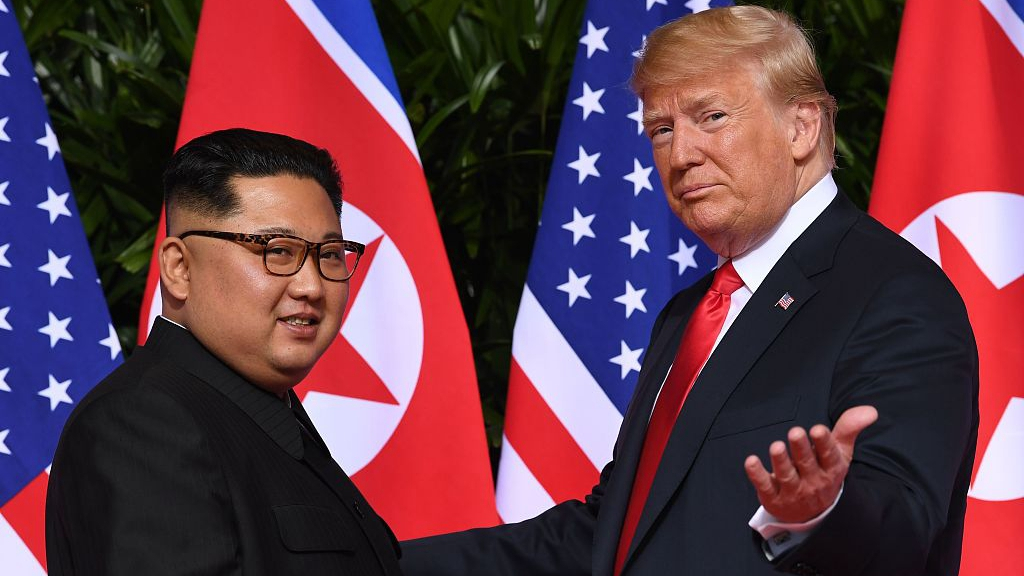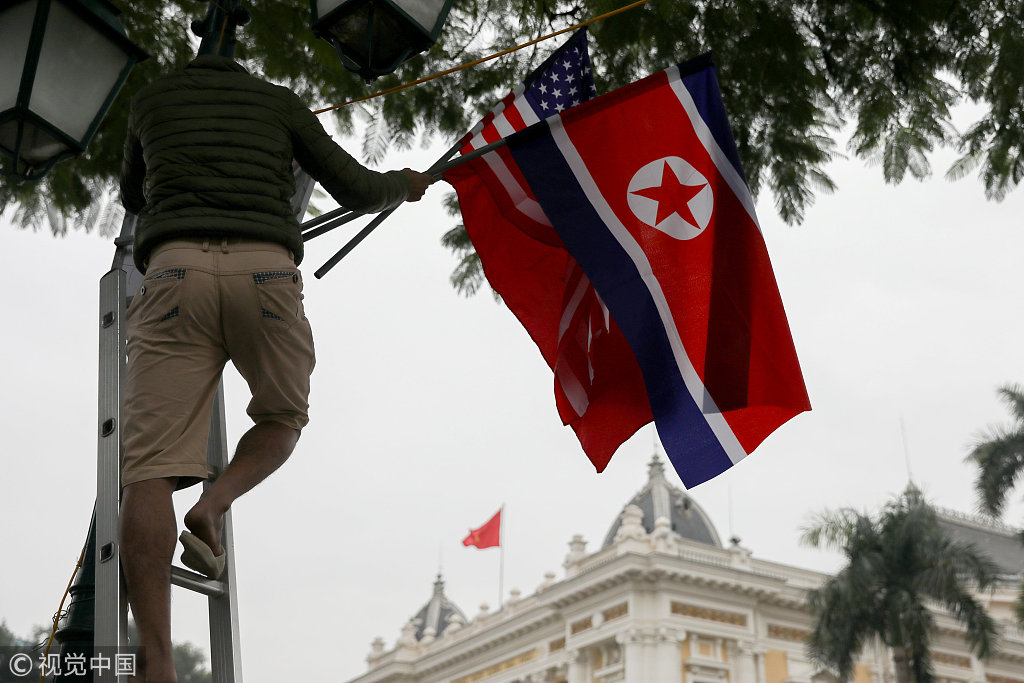
Opinion
12:50, 24-Feb-2019
Opinion: What can we expect from the Trump-Kim summit in Hanoi?
Li Nan

Editor's note: Li Nan is an associate research fellow of the Institute of American Studies at the Chinese Academy of Social Sciences. The article reflects the author's opinion, and not necessarily the views of CGTN.
A second summit between U.S. President Donald Trump and Democratic People's Republic of Korea (DPRK) leader Kim Jong Un will take place on February 27-28 in Vietnam's capital.
The choice of location is symbolic. For the U.S., the Communist Party of Vietnam was once a foe but is now a partner. Vietnam has also conducted a series of market reforms, and seen economic benefits. For Kim, he has talked about the "Vietnamese model" several times.
The U.S.-DPRK dialogue, which has been at a standstill is once again active. If the Singapore summit in June 2018 formed a principled consensus for the two countries to work towards, then the summit in Hanoi may offer the possibility of forming a specific roadmap for the denuclearization of the Korean Peninsula.
However, it is undeniable that the preparations for the summit are still insufficient, and the rush is obvious, as no agreement has been made by the two sides prior to the summit. With the urgency, can we expect a successful summit?
In accordance with the current negotiations between the U.S. and DPRK, the DPRK will likely once again reaffirm its will to denuclearize and commit to dismantling uranium, plutonium facilities and its missile launching base. It may even accept international organizations to enter the DPRK for verification.
The U.S., however, has already realized that the process will likely take longer with Trump telling reporters recently that he is "not in a rush," indicating there might be more meetings with Kim. He appears to have shifted his definition of denuclearization and at this point, success seems to be "no testing" of nuclear weapons.

Tuan Duong Beauty Academy offers free haircuts to anyone wanting to copy the hairstyles of U.S. President Donald Trump and DPRK leader Kim Jong Un until the summit in Hanoi, Vietnam on February 27, 2019. /VCG Photo
Tuan Duong Beauty Academy offers free haircuts to anyone wanting to copy the hairstyles of U.S. President Donald Trump and DPRK leader Kim Jong Un until the summit in Hanoi, Vietnam on February 27, 2019. /VCG Photo
From this perspective, the U.S. will also make corresponding concessions to the DPRK in response to its nuclear abandonment. These programs probably include establishing U.S.-DPRK liaison offices, restoring humanitarian aid to the DPRK, loosening some sanctions against the DPRK, suspending or reducing joint U.S.-Republic of Korea (ROK) military exercises, etc. Of course, this is an ideal list.
Even if a specific plan comes out of this summit, it will be difficult to overcome the mutual distrust between the two countries. Without mutual trust, implementation of any agreement will become a major test.
Inside the U.S. administration, most officials have never believed that the DPRK will truly abandon its nuclear weapons. Even the recent report released from the U.S. intelligence agencies said that the DPRK was still processing its nuclear activities. Moreover, the U.S. State Department has repeatedly claimed that it will not lift any sanctions against until the country has taken verifiable denuclearization steps. In the DPRK, the official media have also repeatedly criticized the U.S.-ROK military exercises and the U.S. sanctions. The mutual suspicion and hostility between the two sides have not weakened.
Whatever the outcome of the summit, the bilateral relationship between the DPRK and U.S. has to improve, with prejudices remaining the biggest obstacle.

A man places DPRK and U.S. flags outside the Opera House, ahead of the upcoming Trump-Kim summit in Hanoi, Vietnam, February 22, 2019. /VCG Photo
A man places DPRK and U.S. flags outside the Opera House, ahead of the upcoming Trump-Kim summit in Hanoi, Vietnam, February 22, 2019. /VCG Photo
However, the summit can set the tone for the entire Korean Peninsula. First of all, the DPRK and ROK will enter a new round of active interaction. The Moon Jae-in administration is eager to launch a series of North-South economic cooperation projects, beginning with restarting the Kaesong Industrial Complex and the Mt. Kumgang tourist resort. For Moon, the Hanoi summit is crucial to his own plans for advancing the North-South relationship. The longstanding tension in the peninsula will be greatly reduced, and economic development will become the main theme.
Second, the DPRK has succeeded in achieving diplomatic breakthroughs, greatly improving relations with neighboring countries and major powers, and gradually getting rid of its long-standing isolation. From the first Singapore summit to the upcoming Vietnam summit, relations between the DPRK and Southeast Asian countries will also be restored and developed. The full restoration of diplomatic relations is undoubtedly conducive to the DPRK's economic development.
Finally, with the improvement of U.S.-DPRK relations, the close military and intelligence links between the U.S., ROK and Japan will be gradually weakened. In particular, the current deterioration between the ROK and Japan has been intensified, and the cracks in the sharing of defense costs and trade issues between the U.S. and ROK, the U.S. and Japan have already appeared. The trilateral is in jeopardy, and Trump's attitude of the alliance is being criticized within his country. If the Vietnam summit re-emerges with the plan to hurt the allies, the gap between the three countries will be more intensified.
The second summit of the U.S. and DPRK will bring another round of cooperation and contest in Northeast Asia in 2019.
(If you want to contribute and have specific expertise, please contact us at opinions@cgtn.com.)

SITEMAP
Copyright © 2018 CGTN. Beijing ICP prepared NO.16065310-3
Copyright © 2018 CGTN. Beijing ICP prepared NO.16065310-3